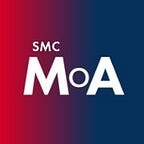Teaching Corita
Part I: Doing and making are acts of hope
by Suzanne C. Schmidt, Ph.D.
In September 2023, the Saint Mary’s College Museum of Art (SMCMoA) will present Corita Kent’s “heroes and sheroes,” a dynamic and vibrant series of 29 prints that engage pressing social issues of the time. Kent’s social status as a woman, a nun (who later left the church*), a teacher, and a voice for radical social change means that — sadly but unsurprisingly — she has been overlooked and underappreciated as a major influence in not only the Pop Art movement but also Social Practice art. Attention to Kent’s work has increased over the past decade due in large part to the advocacy and education work of the Corita Art Center in Los Angeles**.
Beginning in Spring 2021, I offered the first of three iterations of a class on Creativity and Social Justice in the Justice, Community & Leadership program at Saint Mary’s College of California. Each class built upon the book Learning by Heart written by Kent and her longtime friend and former student at Immaculate Heart College (IHC), Jan Steward. As the Engagement Curator for this exhibit, I’ll offer a series of reflections based on teaching and learning from Kent’s work with my students over the past two years.
My approach to teaching Corita arose out of the COVID-19 context. With essential sensory cues muffled — by zoom or by masks — it seemed especially important to approach learning goals in my classes in tactile ways. There’s robust research demonstrating how learning that engages the senses accommodates individual learning differences. Following principles of Universal Design for Learning, research documents how hands-on learning experiences benefit all students***. The tactile activities we practiced in class (papier mache, collage, altered photos, alternative note-taking, and embroidery) encouraged interaction as we all learned to be with one another again.
As a lifelong maker, I wanted to bring my skills into the college classroom. Yet, the demands of teaching required courses don’t often facilitate experimentation. Rapidly shifting to zoom learning and returning to the classroom offered an opening. My students and I ran with it.
In this series, I will reflect on what “learning by heart” looked like for me, my students, and our communities. While the book emerges from Kent and Steward’s experiences in the Art Department of IHC, I’m convinced that their approach to teaching and learning transcends disciplinary frames as they offer ways of protecting and nurturing the seeds of creative human activity. Kent writes, “Doing and making are acts of hope, and as that hope grows, we stop feeling overwhelmed by the troubles of the world. We remember that we — as individuals and groups — can do something about those troubles.” Who couldn’t use this guidance right now?
Teaching Corita has offered me instruction on how to be in the world. My hope is that other educators, students, and life-long learners will find their way to Corita’s text and be similarly inspired to bring these ideas into their classrooms and lives. As Kent writes in the preface, “If you have hopes of changing something for the better, this book might enable you to do just that.”
Additional notes:
* Kent produced “Heroes and Sheroes” in 1968–69 while she was on leave from teaching at Immaculate Heart College. In 1969 she and 326 of her fellow sisters asked to be released from their vows, rather than capitulate on a renewal program (in accordance with the directives of Vatican II) that they proposed four years earlier. Their renewal innovations included “wearing contemporary clothing instead of habits (outer dress traditionally worn by Sisters) as each Sister chose, praying together when and where the Sisters could assemble, improving the educational credentials of Sisters who taught in the community’s schools, and teaching smaller classes of students.” www.immaculateheartcommunity.org/ihc-history
**In Spring 2020 the center released a series of online workshops organized around the themes of Kent’s “Learning by Heart” book: Structure, Celebration, Looking, Plork! I recommend them as an engaging introduction to Kent’s philosophy and work.
***Thanks to numerous JCL students, including: Olivia Watson, Nancy Zhao, Elise Magee and Jesus Jimenez who guided me to some of these sources in their research papers for class: https://files.eric.ed.gov/fulltext/EJ1230491.pdf, https://escholarship.org/uc/item/1sh4d82m
About the Author
Suzanne Schmidt is a Visiting Professor in the Justice, Community & Leadership program at Saint Mary’s College. She currently supports the Saint Mary’s College Museum of Art as an education curator for the upcoming exhibition, heroes and sheroes. Her research examines realist and literary craft narratives and the role of crafting labors in domestic fiction and multi-ethnic American literature. She is the Education Director for the Social Justice Sewing Academy and was a 2016–17 Citizenship fellow at the Yerba Buena Center for the Arts and a 2019–2020 Research Justice at the Intersections Fellow at Mills College.
